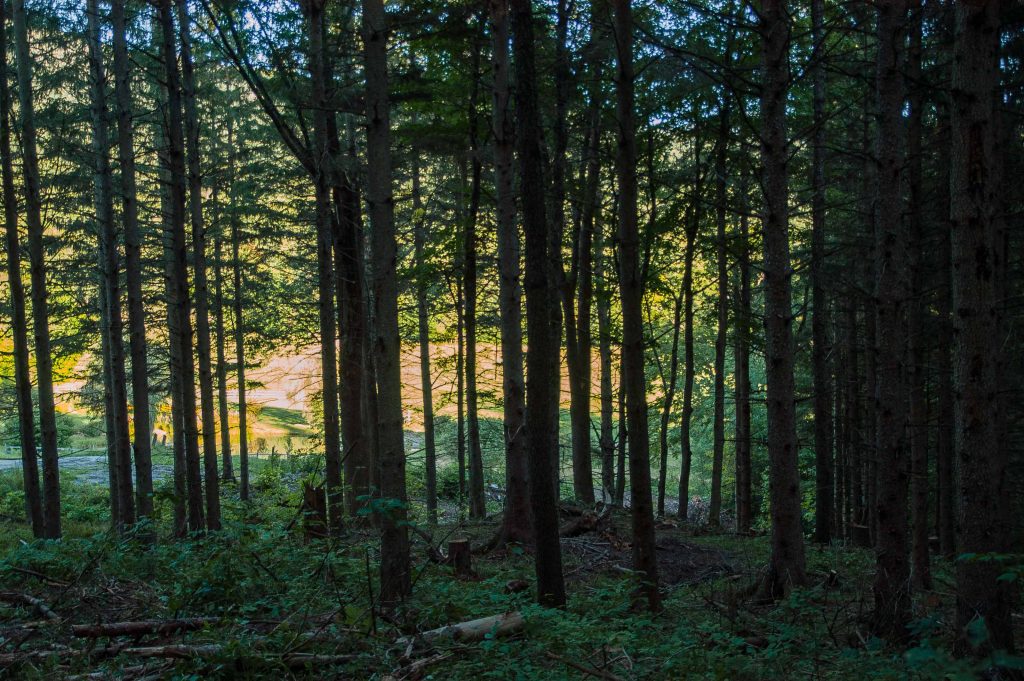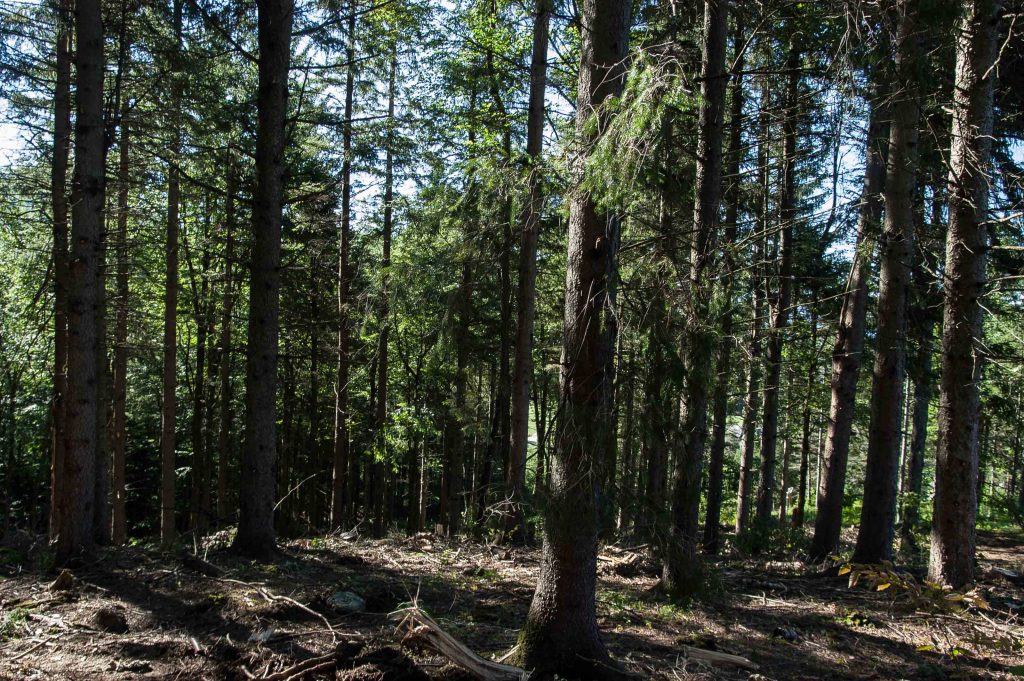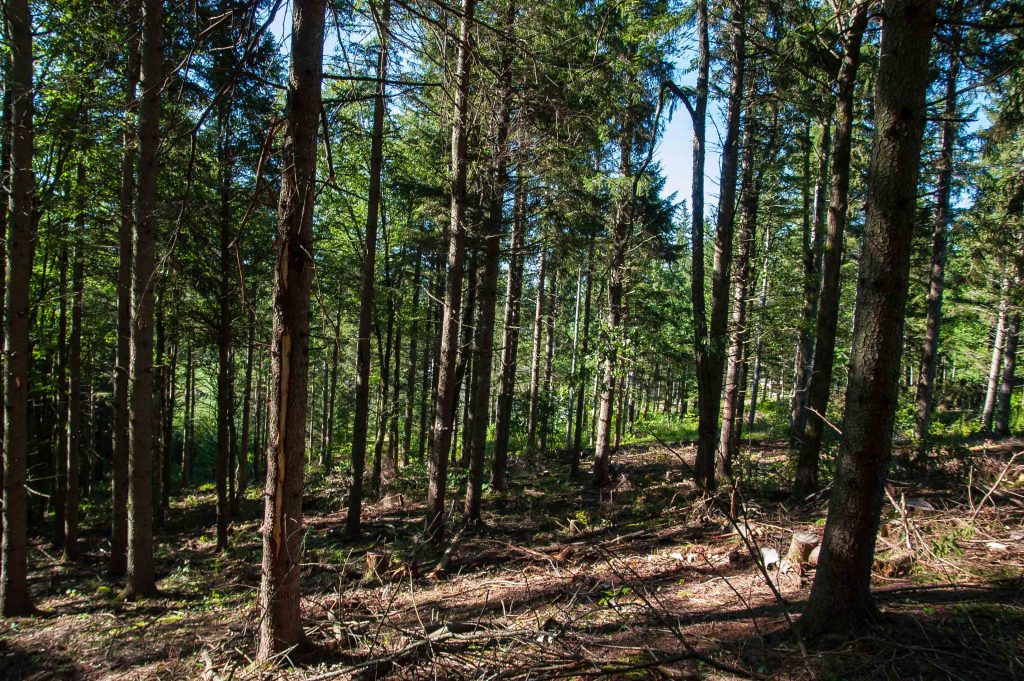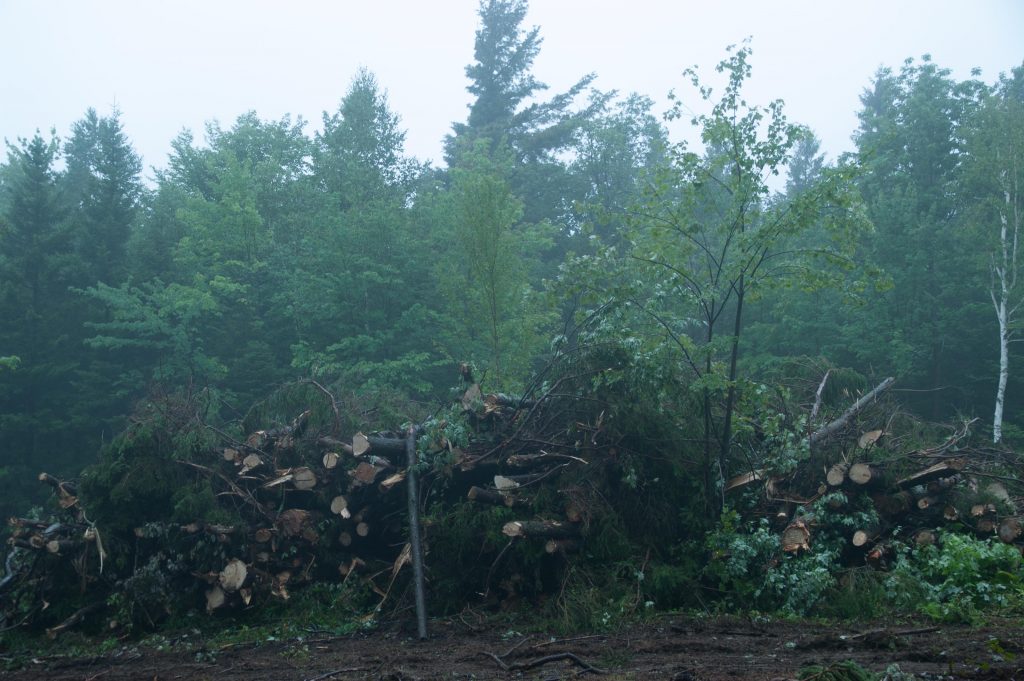Woodland’s Romp
Woodland's Romp
Last spring, as the last snows melted and the first green fiddle head shoots appeared on the forest floor, I made my way, with trusty chain saw, into two primary Commons areas: the lower Plantation where Doug and Barbara are focused and the East Side where the Middle Kingdom and True North are located. With visions of better forest management and beauty in mind I started to cut and limb stunted trees and brush. Soon, Nils with his much heavier hitting equipment, joined me. Nils did some clean up work in the Plantation prior to his accident and then, after a long hiatus about two weeks ago picked up again, utilizing some powerful new tooling mounted on his excavators.
Risk, is what I felt as we waded in with the Nils’s machines, we were making environmental impact, spending money, changing the land marked for sale to others and burning lots of diesel fuel. This made me ask and re-ask myself if we were doing the right thing.
Mostly we were working in non-wetland areas, but in some instances, Nils, with my support, crossed the line, which brought to the attention of Tina Heath, from the State’s wet land office. In response, Tina, who has visited the farm twice, has created a set of standards, particularly in the lower Plantation for us to meet in order to get our wetland permit. We are meeting these standards with handwork, like mulching, to insure compliance. Once we have permits, we will have more flexibility in the wetlands because various interventions, like a road, a building site, can be stipulated in the permit.
We are working in basic accord with our Forestry Plan, created by Fountains Forestry, required by the State for all landowners in Current Use Taxation. Compliance to the plan means about a $10,000 tax break for the farm, primarily on Common Land.
Basically, the Forestry plan calls for thinning in Norway areas by removing dead and stunted tress and other less desirable species like Soft Maple and Poplar. The idea is to give the healthy Norway’s plenty of light and better access to water and soil nutrients. Now, with considerable competition gone, these healthy trees should take off while nature will begin to fill the void opened up on the forest floor. This void means opportunity, now we can do a lot of thinking about how to manage and continue to improve these wooded areas where you will live and in the adjacent Common land.
We have spent some money here, right now we have spent about of Design Deposit money $5,000 on Nils work to date and we have about $1,500 to go with chipping. (See photo and caption. We expect that the chipping will yield about 20 truckloads of material—that will be a lot of wood chips! Marike and I use chips, as mulch in our gardens, to help level and fill in low spots and now I am starting to use chips to establish new garden beds by sheet mulching—this is a great soil building practice that Permaculturist follow. Going forward, depending on your ideas, I see a lot of potential use for chips in the Residential, Neighborhood and Meadow districts mostly for mulching and soil building practices. For example you can mulch around a group of Norway’s establishing a plantation of shade loving perennials. If we have more chips then we need, we can always sell them at about $55.00 a truckload though Nils.
Generating chips begs another big question. Considering the fact that we will always be generating wood chips in clearing and clean up operations we have looked at the option of using wood chip boilers for heating purposes. Last spring, Marijke and I decided to change out our inefficient cord wood boiler in the basement and looked carefully at the woodchips and pellets options hoping that we would find a friendly wood chip system. In the end we decided on pellets because that technology, including the pellet end of it, is so well developed in Vermont and the State and other organizations offers many financial incentives. We learned that there are chip options but they generally utilize larger, too large for a single house, and more expensive systems requiring a higher grade of chips then the stuff we grind here.
Nils, who has been to Finland, has seen smaller and more versatile chip boilers in operation. Nils is a big advocate of utilizing chip as fuel, because they are a by-product of land clearing. The problem is that the Finish type of chip boilers is currently not available in the United States so it’s hard to evaluate these systems and find institutional support for them. That could change, going forward, Marijke and I think it is very important to explore these options.
Returning to the question of impact and value of this work, overall, we think we have opened up some real opportunity here and I hope that you agree in light of costs and other impact factors. The forest, from a silviculture perspective, is in far better shape with lots of interesting opportunity to manage the Norway’s and what comes next on the Forrest floor. For example, following Permaculture principles, we can creating guilds of shade loving trees, shrubs and plants on the forest floor while planting for an eventual replacement for the Norway’s because there are not re-seeding. (Perhaps, in the more open forest floor they will—that would be very exciting).
From design and development perspective we can all better visualize building, infrastructure and landscape options on the parcels that will be helpful in forging our Purchase and Sales agreements. I expect we will have lots of discussions about these options; the prospect of this makes us happy.
Finally, given our core goal of “ Creating a Place that People Love” by enhancing the natural beauty of the landscape, this work moves us forward creating a more beautiful place for us to live in while continuing to engage others including future members and enhancing equity value.
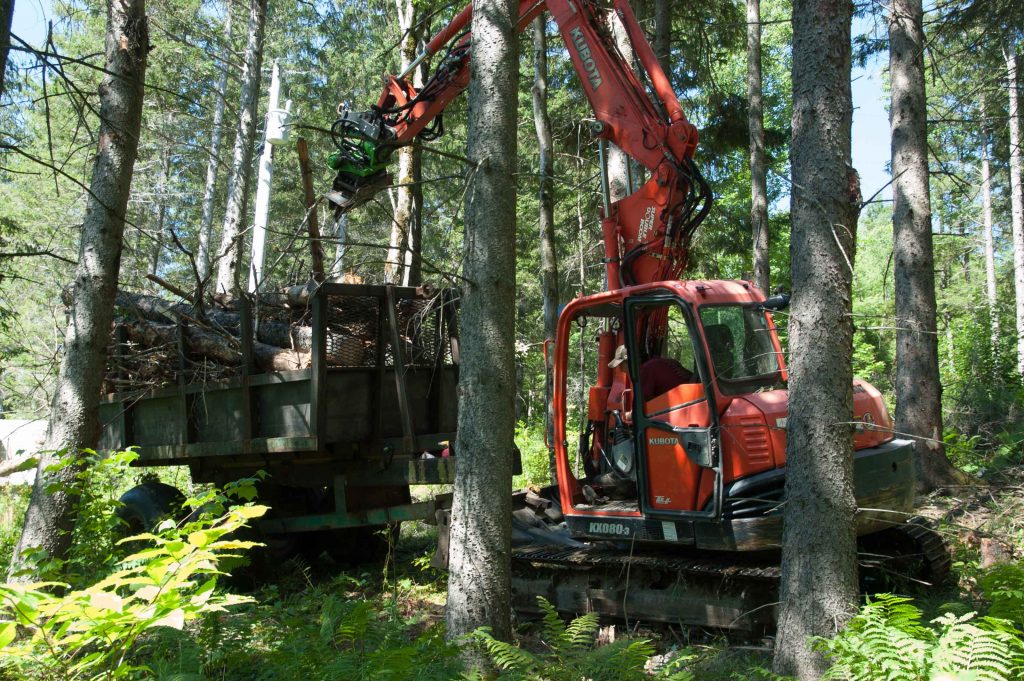
These are Nils' magical machines, the excavator may look a little old, but there are a lot of brand new ideas here that Nils pioneers in including a rotating head at the end of the boom, sheers that cut trees up to 12" and this great tow along devise, called a "Forwarder, " that Nils can park trees in instead of skidding them with cables. We are beneficiaries of these innovations.
